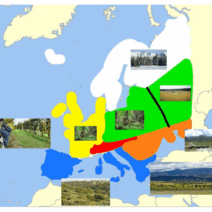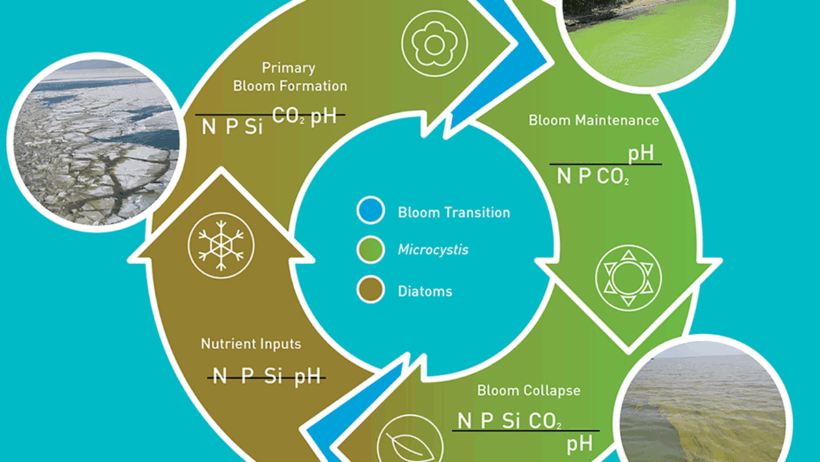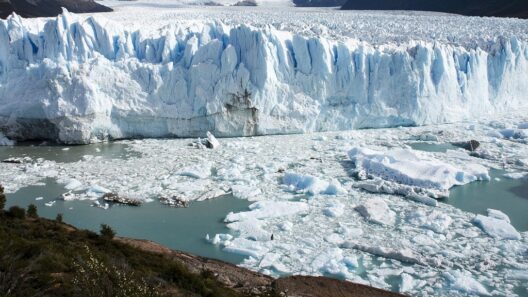The natural world is an intricate dance of elements, continually evolving and influencing one another in profound ways. Among these interactions exists a phenomenon that often eludes public consciousness—algae blooms. These vibrant spectacles in our oceans may appear benign or even beautiful at first glance, but they wield a significant power over the climate, contributing to the complexities of global warming.
To understand how algae blooms influence global warming, one must first recognize their place within the interconnected web of the oceanic ecosystem. Algae, particularly phytoplankton, serve as the ocean’s primary producers, harnessing sunlight through photosynthesis to create energy. They are akin to the green lungs of the ocean, processing vast quantities of carbon dioxide (CO2) and releasing oxygen. However, their role does not end here. Under certain conditions, healthy algae populations may erupt into blooms, turning serene blue waters into vibrant green patches.
Algae blooms can be classified into several categories, primarily focusing on their composition—some are harmless while others produce toxins that wreak havoc on marine life and human health. The diabolic duo of rising water temperatures and nutrient loading from agricultural runoff stimulates the proliferation of these blooms. In essence, warmer waters function as a greenhouse, encouraging algae to flourish, which brings us to the crux of the issue: how do these blooms tie into the fabric of global warming?
As algae flourish, they absorb CO2, a crucial mechanism for mitigating climate change. Unfortunately, this positive contribution is often overshadowed by a darker consequence. After blooms reach their peak, they die off, leading to a significant decomposition process. Decomposing algae are consumed by bacteria, which thrive on the surplus organic matter. This decomposition process is energetically expensive; it requires high levels of oxygen and leads to hypoxic zones, commonly known as “dead zones,” which suffocate marine life. The decay of algae in these zones emits stored carbon back into the atmosphere, further exacerbating the greenhouse effect. It is a double-edged sword that illustrates the complexity of nature’s balance.
Furthermore, certain algae species produce potent toxins during their blooms. These harmful algal blooms (HABs) can devastate marine ecosystems, autochthonous populations, and human health. As the pressure mounts on marine resources, rising temperatures and anthropogenic nutrient inputs from agriculture become a recipe for disaster. HABs disproportionately threaten fish populations, leading to economic ramifications for communities dependent on fishing and aquaculture. The intricate dance of life is disrupted, leaving the ocean’s ecosystem staggering in its wake.
Climate change is not just a looming specter; it is a contemporary reality affecting all biomes, and oceans are not exempt. As air temperatures rise, water temperatures follow suit, leading to shifts in marine biodiversity. Warmer waters can alter the distribution of fish species, leading to a cascading effect on predator-prey relationships and nutrient flow within ecosystems. In this tangled web, algae are both protagonists and antagonists, as they flourish under changed conditions while simultaneously contributing to negative feedback loops.
Interestingly, the occurrence of algae blooms also raises questions about the ocean’s capacity for carbon sequestration. The oceanic abyss has been called the world’s largest carbon sink, absorbing nearly a quarter of human-induced CO2 emissions. However, the tumultuous blooms disrupt this delicate function. The shift from carbon absorption to carbon release creates unpredictability in carbon cycle models, a troubling notion in the context of climate predictions. It exemplifies how seemingly localized phenomena can have far-reaching implications.
The socio-economic repercussions are also significant. Regions struck by HABs witness substantial declines in tourism and fishing industries, straining local economies. The decline in food sources can lead to increased prices for consumers and economic turmoil for providers, especially in vulnerable communities. Thus, the consequences of algae blooms ripple far beyond the water’s edge, impacting livelihoods, public health, and community resilience.
One cannot overlook the innovative approaches being explored to combat the dual threats posed by climate change and algae blooms. Researchers are investigating sustainable agricultural practices that minimize nutrient runoff, aiming to mitigate factors that catalyze bloom formation. Additionally, integrated coastal zone management aims to balance human activities with the health of marine ecosystems, fostering resilience and reducing vulnerability.
In summary, algae blooms represent both a natural wonder and a significant environmental challenge. The ocean’s role as a carbon sink is jeopardized by the very blooms that could ostensibly mitigate climate change through CO2 absorption. They invite consideration of the complexities of ecological interactions and the nuance inherent in environmental stewardship. As guardians of our planet, we must remain cognizant of the delicate equilibrium sustained within these aquatic realms. While algae may spark life, they also serve as a harbinger of the unbridled repercussions of a warming world. Moving forward, collective action and informed decision-making will be essential in creating a sustainable future for our oceans and, consequently, our planet.







